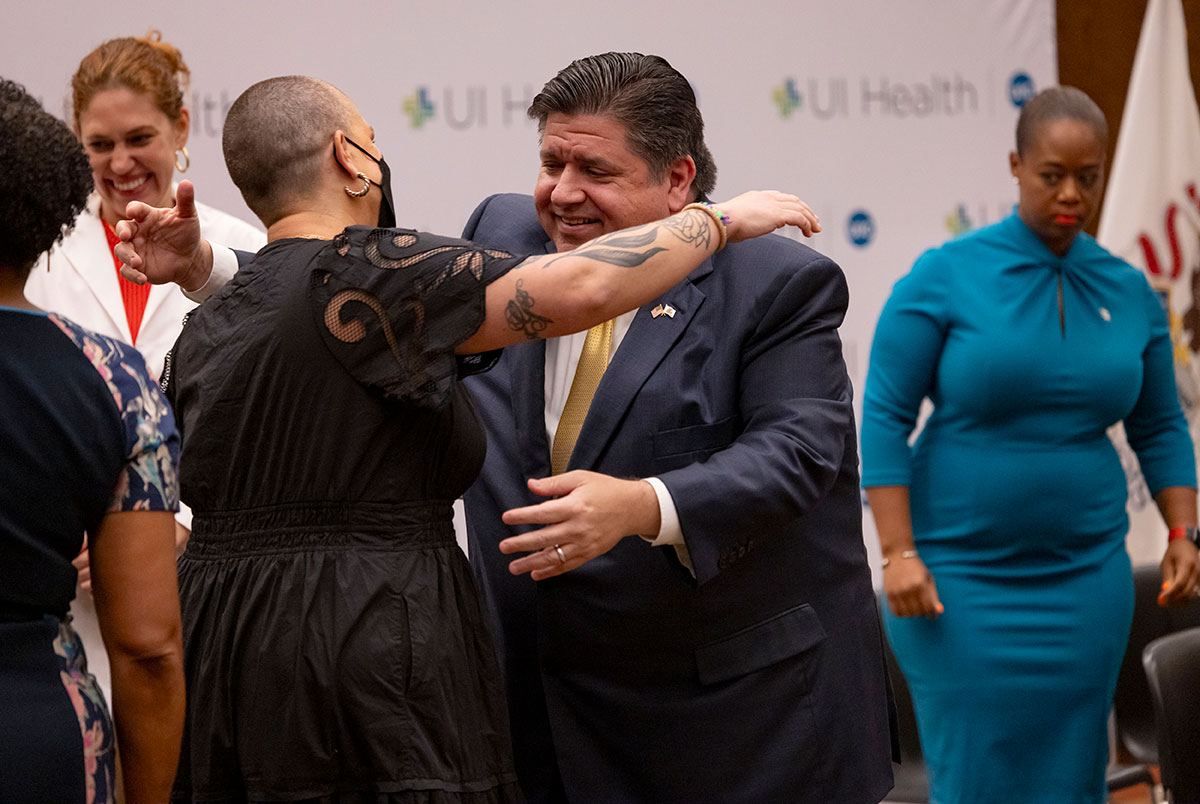Illinois has become the most progressive state in the Union.
Just look at the summer our governor is having. Last month, the state Supreme Court ruled his SAFE-T Act constitutional, making Illinois the first state to eliminate cash bail. On Monday, he “doubled down” on expanding access to abortion, announcing $23 million in grants to clinics experiencing a surge in demand from our neighboring states, which have mostly banned the procedure. Illinois already has one of the nation’s most liberal abortion laws, the Reproductive Health Act, which establishes abortion as a “fundamental right” and declares that a “fertilized egg, embryo, or fetus does not have independent rights under the laws of this state.”
And look at the summer our mayor is having, launching a progressive agenda that includes eliminating the sub-minimum wage for tipped workers and raising real estate taxes on million-dollar homes. Actually, just look at our mayor: a union organizer who ran on a platform of making the rich “pay their fair share.” Johnson is the most left-wing big city mayor in the United States. He doesn’t call himself a socialist, but his City Council floor leader, alderperson Carlos Ramirez-Rosa, does.
Why has a Midwestern state which for most of its history has defined moderation in politics stolen the crown of progressivism from New York, California, Massachusetts, and even Vermont, which has a Republican governor? I would argue that Illinois is so progressive because it’s a Midwestern state.
In 2009, journalist Bill Bishop published a book called The Big Sort: Why The Clustering of Like-Minded America is Tearing Us Apart. Beginning in the 1990s, Bishop argued, Americans began clustering in communities “among people with similar ways of life, beliefs, and, in the end, politics.” Conservatives moved to small towns, liberals to big cities, increasing the nation’s political polarization as they formed like-minded tribes.
“People were sorting, and the movements themselves were changing economies,” Bishop wrote. “Young people left old industrial towns and rural America for urban life, moving to a small group of cities.”
One of those cities is, of course, Chicago, whose hinterlands include more old industrial towns than any other big city in America. Governor Pritzker calls Illinois an “oasis” in the Midwest for women seeking reproductive health care. That’s a result of Chicago becoming an oasis for young, educated Midwesterners who moved here to get the hell out of conservative small towns in Wisconsin, Indiana, Iowa and Missouri.
During the mayoral campaign, the most dedicated Johnson volunteer I met was Jonathan Nagy, a 33-year-old queer artist who moved to Chicago from his hometown in Ohio in 2016. Small-town Ohio is not a great place to be queer, or an artist. Nagy settled in Logan Square because he was “looking for a political community” and “wanted intentional spaces to meet my neighbors.” Those sound like the motivations that have created Bishop’s Big Sort. Bishop also wrote that “gay couples were congregating in particular cities — specific zip codes, in fact.”
(This isn’t just happening in Chicago. Peoria has also become a destination for queer, minority migrants attracted by its cost of living and its location in a Blue state.)
Some of Chicago’s most progressive politicians have made this same journey: state Rep. Ann Williams is from Iowa; alderperson Maria Hadden is from Ohio.
The result of all this sorting, Bishop wrote, is that the liberal oases have become more liberal, and the conservative oases have become more conservative: “In 1976, less than a quarter of Americans lived in places where the presidential election was a landslide. By 2004, nearly half of all voters lived in landslide counties…Social psychologists had studied like-minded groups and could predict how people living and worshiping in homogeneous groups would react: as people heard their beliefs reflected and amplified, they would become more extreme in their thinking.”
I have argued before that the political and social reordering of the Midwest contributed to Donald Trump’s victory over Hillary Clinton in 2016: Trump “narrowly won the Rust Belt states, while Clinton posted a commanding victory in Illinois. The only industrial Midwestern state she won, it’s home to tens of thousands of young Michiganders, Wisconsinites, Ohioans and Pennsylvanians who fled their home towns for Chicago, the regions cultural and financial capital, a city that’s winning in the 21st-century global economy at the expense of surrounding states. Had those college graduates found opportunities at home, they might have flipped their states to Clinton.”
Likewise, it’s easier to ban abortion in states where all the young, liberal voters have moved away. And easier to protect it in the state where they all moved. More than the coastal states, Illinois is surrounded by small towns that have lent us their liberal populations. There was just more sorting to do in the Midwest. The Midwest is pretty well sorted out now, politically, and the result is Illinois as the nation’s leading bastion of progressivism.




